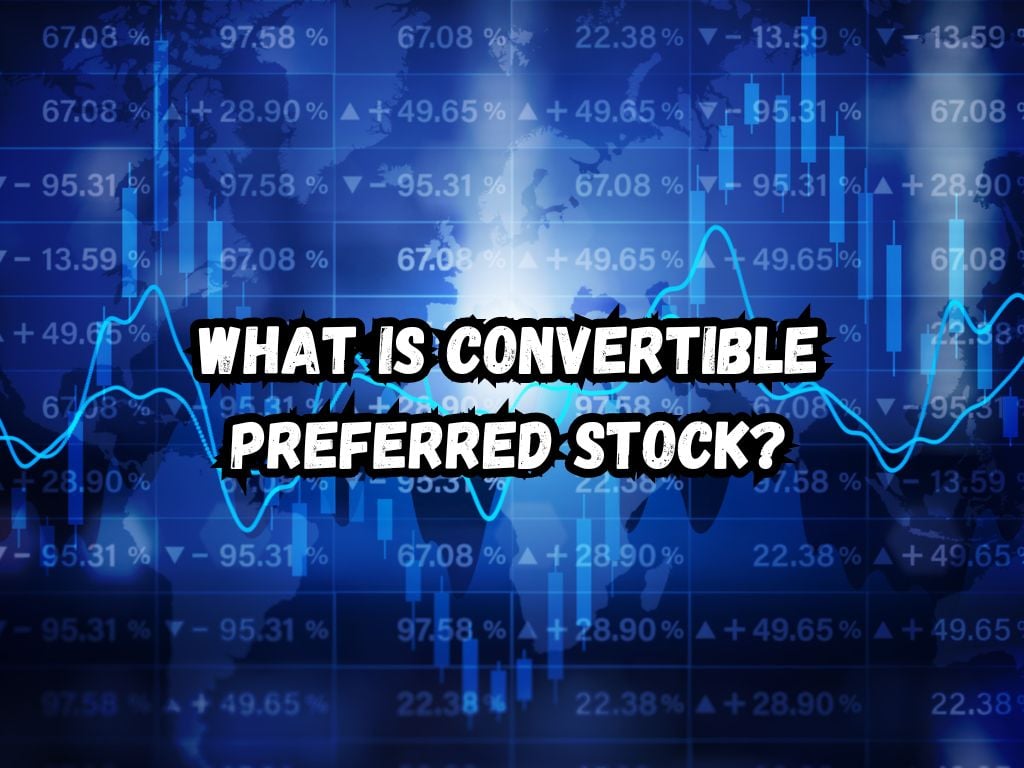In the financial world, blending the benefits of both equity and debt offerings to create a tailored investment vehicle can provide unique advantages. Convertible preferred stock stands as a testament to such an innovation. So, what is convertible preferred stock?
It intertwines the fixed-income stability of preferred shares with the growth potential inherent in common stocks.
This in-depth guide aims to demystify convertible preferred stock, outlining its benefits, inherent risks, and offering insights into its strategic use in investment portfolios.
What Is Convertible Preferred Stock? Understanding Convertible Preferred Stock
Convertible preferred stock is an investment class that, by design, offers the best of both the equity and fixed-income worlds. Let’s delve deeper into its characteristics, conversion mechanics, and its distinctness from common preferred stock.
The Basics
At its core, convertible preferred stock is a type of preferred share that holders can convert into a predetermined number of common shares, typically after a certain period.
This dual nature not only provides the potential for dividend earnings but also allows participation in the equity growth of the issuing company.
Conversion Mechanics
The conversion feature is a defining trait of these securities. It is governed by the conversion ratio, which dictates the number of common shares an investor can receive for each preferred share converted.
Triggering this conversion often depends on the performance of the common stock price reaching a level that makes conversion financially beneficial.

Advantages of Convertible Preferred Stock
The allure of convertible preferred stock lies in its unique blend of advantages, key among them being high return potential, conversion flexibility, and preferential dividend earnings.
High Return Potential
The upside potential of convertible preferred stocks is closely tied to the performance of the issuer’s common stock. If the stock performs well, the value of the convertible preferred stock rises, offering the possibility of significant capital gains on conversion.
Flexibility in Conversions
Investors cherish the flexibility that comes with the option to convert. Depending on how the market fares and aligns with their investment goals, they can choose the optimal time to convert, capitalizing on favorable conditions.
Dividend Benefits
Despite their growth potential, these instruments offer a layer of income stability through dividends, often higher than those from common stocks, making them an appealing choice for income-focused investors.
Risks and Considerations
Though convertible preferred stocks present an attractive investment case, they come with their set of risks and considerations, from market volatility to conversion terms that need careful scrutiny.
Market Risks
The hybrid nature of convertible preferred stocks does not make them immune to market fluctuations. Adverse market conditions can diminish the attraction of the conversion option if the company’s common stock price performs poorly.
Conversion Terms and Conditions
Investors must acquaint themselves with the specifics of the conversion feature. Misinterpreting these terms can lead to missed opportunities or suboptimal conversion timings, affecting the investment’s overall profitability.
Comparative Analysis
When weighing options, comparing convertible and non-convertible preferred stocks can clarify which aligns better with one’s investment strategy, considering the risk-return balance of each.
Common Terms Associated with Convertible Preferred Stock
Familiarity with terminologies such as conversion ratio, price, and premium is crucial for anyone considering investing in convertible preferred stocks.
Conversion Ratio
This term details the number of common shares an investor can claim per convertible preferred share. It’s a critical factor in assessing the conversion’s profitability.
Conversion Price
This is the price at which convertible preferred shares can be turned into common shares, setting the benchmark for assessing the conversion’s appeal.
Conversion Premium
The premium refers to the extra cost of acquiring common shares via conversion over purchasing them directly in the market. It represents the price of having a convertible option.

Examples of Convertible Preferred Stock in Action
Illustrative examples and case studies can shed light on practical applications and the strategic value of convertible preferred stocks.
Hypothetical Scenarios
Imagine an investor holding convertible preferred stocks in a burgeoning tech company. If the tech company’s stock soars, converting the preferred stocks into common shares could result in substantial gains, showcasing the instrument’s growth potential.
Real-World Case Studies
Companies, especially in sectors like technology, often issue convertible preferred stocks to raise capital efficiently. Investors in these companies can both support growth and potentially enjoy considerable returns if the company’s valuation grows.
How to Invest in Convertible Preferred Stock
Investing in convertible preferred stocks requires a crucial blend of strategic thinking and careful analysis, especially for newcomers to the investment scene.
For Beginners
Understanding the detailed terms of any convertible preferred stock issue is vital. Awareness of the conversion ratios, market conditions, and the issuing company’s health plays a pivotal role in making informed investment decisions.
Portfolio Considerations
For investors looking to incorporate convertible preferred stocks into their portfolios, alignment with overall investment goals and risk tolerance must guide the selection process. It’s not merely about diversification but aligning with one’s investment philosophy.
Frequently Asked Questions
Can you lose money on convertible preferred stocks?
Yes, all investments entail risk. Market downturns or poor performance of the issuer’s common stock can negatively impact the value of convertible preferred stocks.
What are the tax implications of holding convertible preferred stocks?
The tax impact varies based on local laws and individual situations. Generally, dividends are taxable, and conversion might result in capital gains or losses, each with its own tax considerations.
Convertible preferred stocks offer a nuanced investment avenue that marries the predictability of dividends with the prospects of equity growth. With a comprehensive understanding and strategic application, they serve as a noteworthy addition to diversified investment portfolios, blending income generation with potential capital appreciation.
Conclusion
Convertible preferred stock embodies a sophisticated investment choice, offering a hybrid avenue for income and growth.
By delving into its mechanics, advantages, and strategic uses, investors can judiciously integrate it into their portfolios, hedging against downturns while eyeing growth opportunities.
Prudent analysis complemented by a robust understanding of market dynamics and terms can unlock its potential as a versatile investment tool.


 Tags:
Tags:










